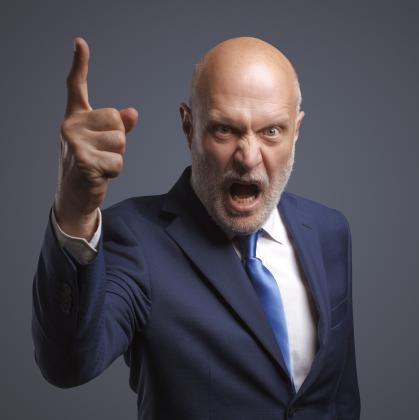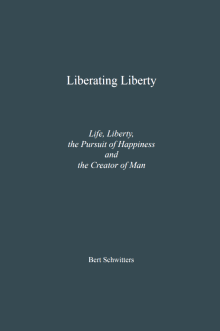On Debate and Existence
People who live in a world where facts, rational arguments, open conversation, honest disagreement and respect for the freedom of speech still matter often wonder why it is that they are being attacked, ridiculed, deplatformed, debanked, threatened, bullied, censored, smeared and vilified by those with whom they try to communicate on the basis of facts and reality. The former wonder why it is that the latter seem to experience exposure to facts and reason as an existential threat. In his essay “On Debate and Existence”, Eric Voegelin (1901 – 1985), one of the 20th Century’s most inspiring and original political philosophers, unravels this mystery by explaining to the reader that in such instances, the “exchange of argument” is “disturbed by a profound difference of attitude with regard to all fundamental questions of human existence—with regard to the nature of man, to his place in the world, to his place in society and history, to his relation to God.”
Second Reality
When Worlds are so apart, rational argument, so Voegelin, no longer prevails “because the partner to the discussion [does] not accept as binding for himself the matrix of reality in which all specific questions concerning our existence as human beings are ultimately rooted; he has overlaid the reality of existence with another mode of existence that [the Austrian essayist] Robert Musil has called the Second Reality.” No matter how rational, the argument does not achieve results. It doesn’t even reach its intended recipient, because “behind the appearance of a rational debate there lurk[s] the difference of two modes of existence, of existence in truth and existence in untruth. The universe of rational discourse collapses, we may say, when the common ground of existence in reality has disappeared.” Very true, but this still doesn’t explain why people who live in a Second Reality react with such violence toward people who expose them to First Reality.
The Metaxy
First Reality … ? That is the “world” that precisely reflects the totality of the realm that has always existed between Man and God, between the World’s Genesis and the Beyond, between the Mundane and the Divine Ground of Being, between the “plain” and the “mountain”, between death and immortality, between the finite and the infinite. Philosophers conscious of this Great Between named it metaxy. The metaxy, so they said, engenders a gravitational interaction between its poles, a “pulling” and “thrusting” force whose natural orientation steers Men’s search for order and meaning in the direction of their own Beginning and their Genesis at the Divine Ground of Being. Most certainly, the metaxy is not the Garden of Eden. It is the playground where the raw physical and the ethereal metaphysical worlds meet and intertwine, where human meets human and divine. It is First Reality because in terms of order and hierarchy, it is the reality that is “first in rank” since it reflects all the interactions and movements that take place in the metaxy. It is superior to all Second Realities because the latter merely reflect disturbed, fragmented, truncated and adulterated versions of the metaxy.
“Second Selves”
Second Realities are self-created dreamworlds whereby the dreamer not only seeks to replace First Reality but wherein he or she becomes meaningful and finds him- or herself at ease, worthy of respect and in constant contact with his or her will to generate and apply coercive powers. These dreamworlds form the fake “reality” that surrounds what one might call an imaginary “Second Self”, which is the fake Self that was conjured to replace the original First Self. Once a Second Reality has taken shape it informs the necessary ideology or world view that serves to present it as the Supreme Reality that must not only annihilate First Reality but opposing or competing ideologies and world views as well. At their very core, Second Realities and Second Selves are the result of Man’s revolt against the tensions that are inherent to conscious existence in First Reality. In terms of consciousness, Second Realities are states of self-inflicted unconsciousness.
The Krankheit des Geistes
People who are unable to step out of their Second Realities because they are convinced that they are “real”, suffer from the spritual aberration that was quite accurately described as the disease of the soul, as “pneuma-pathology”. Cicero called it the morbus animi. Voegelin defined it as “Krankheit des Geistes”, as a condition of alienation, of deformed and closed existence in which the ability to make contact with reality is heavily disturbed. The pneumapath thus lives in a strange self-created blend of the categorically and ontologically different First and Second Reality. Instead of confronting First Reality in its entirety, it is truncated by blanking out its undesirable and inconvenient aspects, whereafter the blanks are neatly and seamlessly filled with the core elements of the utopian dreamworld of the pneumapath’s preference. This in itself need not worry us, but the “blending” inevitably engenders in the “blender” the Will to Power that is required to forcibly realize a Second Reality and efface First Reality. So it is that in all Second Realities combat, strife, coercion, war and the Will to Power become the dominant aspects of human behaviour.
Avoiding the tensions of the metaxy
In Eric Voegelin and the Politics of Spiritual Revolt, Associate Professor of Political Science at Loyola College in Baltimore, Michael Franz, expert interpreter and one of the keepers of Voegelin’s intellectual legacy, explained why facts and reason no longer play a role in communicating with “Second Selves” and why this makes the effort to communicate with such Selves completely useless and in many cases counterproductive. According to Franz, since “genuine ideological consciousness within a Second Reality like Marxism or positivism is less a result of the intellectual attractiveness of the doctrine than of its capacity for dulling the tensions of open existence, a rational critique of the particulars of the doctrine is likely to be of no avail in such cases. […] Voegelin’s analysis suggests that the provision of a plausible account of the world is only a secondary project within the construction of an ideological Second Reality, and by the same token it would appear that adherence to an ideology is first a matter of faith ‒ followed by a more or less elaborate project of circumventing the dissonance between the First and Second Realities.” The basic problem, according to Franz, can be stated simply: “exposure to the ‘healthy’ tension of balanced consciousness in the metaxy is not likely to reorient the closed soul, for it was exposure to precisely this tension that first prompted pneumapathological closure.” As a result, “a reintroduction to the tension of the metaxy will bring but another, perhaps stronger, dose of the same.”
Turning the tables
The ultimate trick of the pneumapath is to install in the minds of his opponents the notion that God is Dead, that there is no Divine Ground of Being, that Man is not a spiritual being, that the human Soul ‒ the pneuma ‒ is a delusional fiction. This will desecrate the metaxy as the “playing field” where Man meets God as a partner in his quest for truth and meaning. More in particular, when Man lacks pneuma, pneumapathology and pneumapaths don’t exist. In this secularized “reality” the diagnosis of pneumapathology is not only impossible, it is automatically and inherently disqualified as offensive, insulting and as a sign of mental dysfunction and intellectual incompetence on the part of the one who makes the diagnosis. This is how the pneumapath turns the tables on his opponent and manages to shift debate and rational argument to a contest between moral values. Assuming the “moral highground” in that contest enables the pneumapath to disqualify the realist as a morally inferior human being who does not deserve standing and should be distrusted and silenced.
Detecting the dreams
Pneumapaths mostly go undetected because, as explained by Voegelin, their Second Realities are clever structures designed “to eclipse our image of reality by a counterimage that will furnish a plausible basis for the action he calls for”. In order to serve this purpose, the counterimage “must fulfill two conditions: it must cover the structure of reality with sufficient comprehensiveness to appear, by the standard prevailing at the time, debatable as a true image; and it must be analytically obscure enough not to reveal its character of a dream image at first glance.” Of course, the dream “is never acknowledged as a dream but, in the context of the oeuvre it informs, it is meant to be the theoretical core of a true image of reality.” This is how the dream that is stealthily implanted in the counterimage of reality perverts and blurs the true image of First Reality. Hence, what pneumapaths fear the most is that the dreams they “pasted” into their counterimages of reality are detected as … dreams. As Voegelin put it, “[o]nce the dream is disengaged from its context, its conflict with reality is practically a matter of self-declaration”, and, if I may add, of the implosion and self-destruction of the Second Reality. While pneumapaths may succeed in turning the tables on their opponents, they can’t prevent the latters’ First Reality from turning the tables on the dreamworlds they wove into their counterimages of reality.
+ + + + + + + + +








